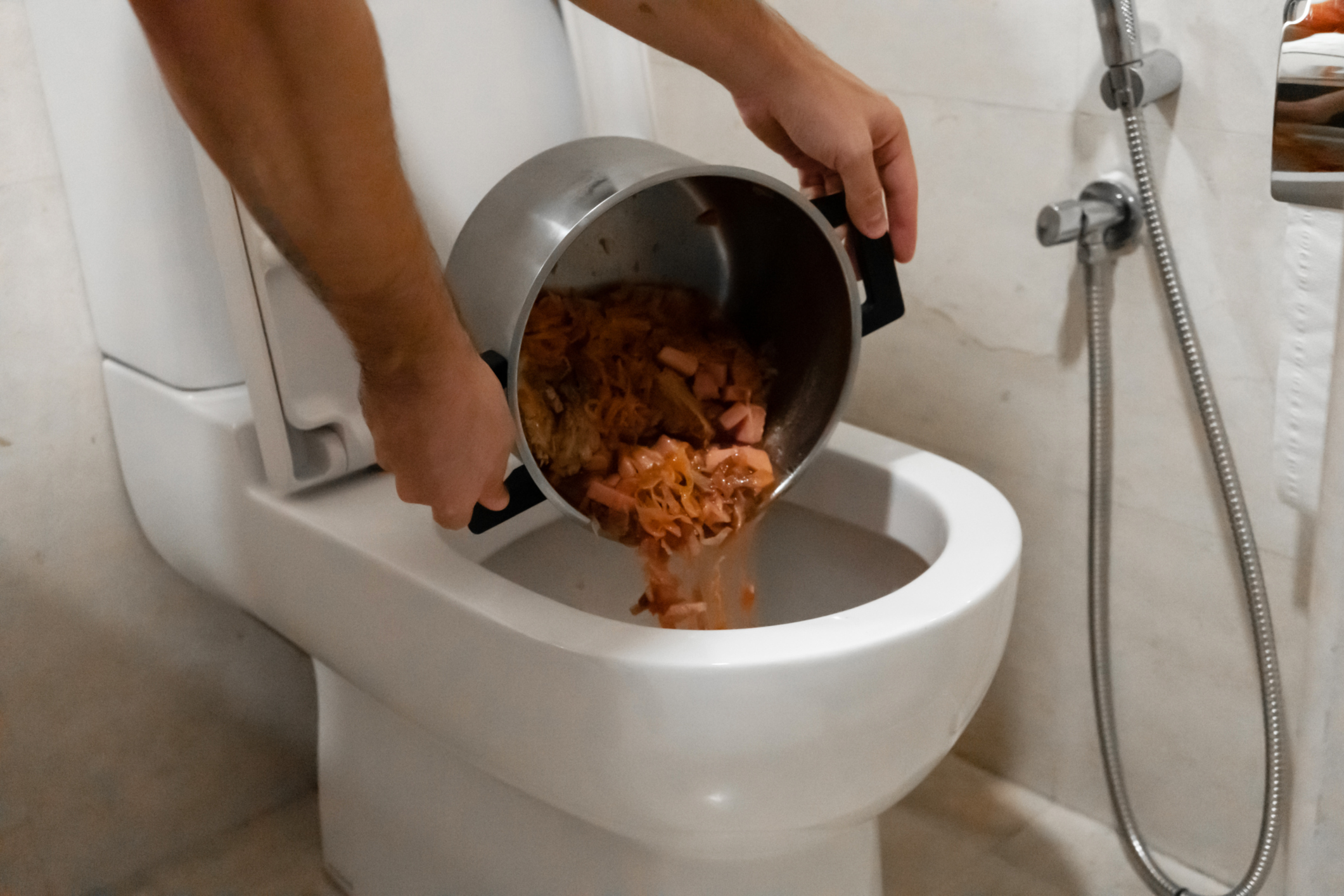Are You Allowed to Flush Food Down the Toilet?
Are You Allowed to Flush Food Down the Toilet?
Blog Article
Everyone has their own unique perception when it comes to What Can Happen If You Flush Food Down the Toilet?.

Introduction
Many individuals are commonly confronted with the predicament of what to do with food waste, specifically when it involves leftovers or scraps. One usual inquiry that develops is whether it's okay to purge food down the bathroom. In this post, we'll delve into the reasons why people might take into consideration purging food, the consequences of doing so, and alternative methods for proper disposal.
Reasons people could consider purging food
Absence of understanding
Some people might not recognize the potential harm caused by purging food down the toilet. They may wrongly believe that it's a harmless technique.
Benefit
Flushing food down the bathroom might seem like a quick and easy service to disposing of unwanted scraps, especially when there's no nearby trash bin available.
Laziness
In many cases, individuals might just choose to flush food out of large idleness, without taking into consideration the effects of their actions.
Consequences of flushing food down the commode
Ecological impact
Food waste that winds up in waterways can contribute to air pollution and harm marine ecological communities. In addition, the water utilized to purge food can strain water sources.
Plumbing concerns
Flushing food can cause clogged pipelines and drains pipes, triggering costly pipes repairs and troubles.
Sorts of food that should not be flushed
Coarse foods
Foods with coarse textures such as celery or corn husks can obtain entangled in pipelines and cause clogs.
Starchy foods
Starchy foods like pasta and rice can absorb water and swell, causing blockages in pipes.
Oils and fats
Greasy foods like bacon or food preparation oils should never be purged down the commode as they can solidify and trigger clogs.
Correct disposal methods for food waste
Making use of a garbage disposal
For homes geared up with waste disposal unit, food scraps can be ground up and purged via the plumbing system. However, not all foods are suitable for disposal in this fashion.
Recycling
Specific food packaging materials can be recycled, reducing waste and minimizing ecological impact.
Composting
Composting is an eco-friendly way to take care of food waste. Organic materials can be composted and used to enhance dirt for gardening.
The value of appropriate waste administration
Decreasing environmental injury
Appropriate waste administration practices, such as composting and recycling, help decrease contamination and preserve natural resources for future generations.
Shielding plumbing systems
By avoiding the technique of flushing food down the bathroom, property owners can protect against expensive pipes repair services and maintain the stability of their plumbing systems.
Final thought
In conclusion, while it may be alluring to flush food down the bathroom for ease, it is very important to understand the potential repercussions of this action. By taking on proper waste monitoring methods and getting rid of food waste responsibly, people can add to healthier pipes systems and a cleaner setting for all.
FLUSH FOOD DOWN THE TOILET?
FLUSHING FOOD CAN CAUSE BLOCKED DRAINS IN YOUR HOME
All of the plumbing fixtures in your home are connected to the same sewer pipe outside of your home. This outdoor sewer pipe is responsible for transporting all the wastewater from your home to the Council sewer mains. Even small pieces of food that go down the kitchen sink can cause problems for your sewer. It should therefore be obvious that flushing larger bits of food, such as meat, risks a clog in either the toilet itself or the sewer pipes. Flushing greasy food is even more problematic because oil coagulates when it cools, coating the interior lining of your pipes.
THE TOILET IS NOT A BIN
Food isn’t the only thing that people shouldn’t be flushing down the toilet. People use the toilet to dispose of all kinds of things such as tampons, makeup wipes, dental floss, kitty litter and even underwear. Water goes to great lengths to educate residents about the high costs and stress placed on wastewater treatment systems simply from people flushing the wrong stuff down the toilet. It costs taxpayers millions of dollars each year, and homeowners thousands in blocked drain repairs.
FLUSHING FOOD IS A WASTE OF WATER
Flushing food is a waste of our most precious resource - water. In June this year Level 1 water restrictions were introduced to protect water supply from drought conditions. Much of New South Wales continues to be affected by prolonged drought with recent figures revealing up to 97 per cent of the state remains in drought. Depending on whether you have a single or dual flush toilet, every single flush uses between five and 11 litres of water. In the current climate this is a huge amount of water to be wasting on flushing food that should be placed in the bin (or better yet, the compost).
https://www.jabplumbingsolutions.com.au/blog/can-you-flush-food-down-the-toilet

We had been shown that article about Think Twice Before Flushing Food Down Your Toilet from an associate on a different web address. So long as you enjoyed reading our blog posting if you please remember to share it. Thanks so much for your time spent reading it.
Or Book Technician Here Report this page